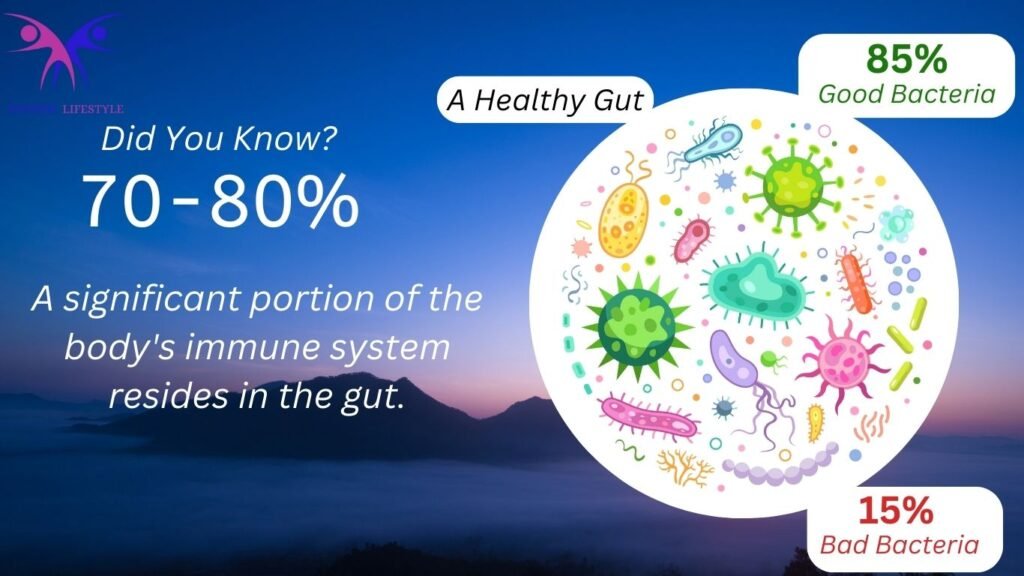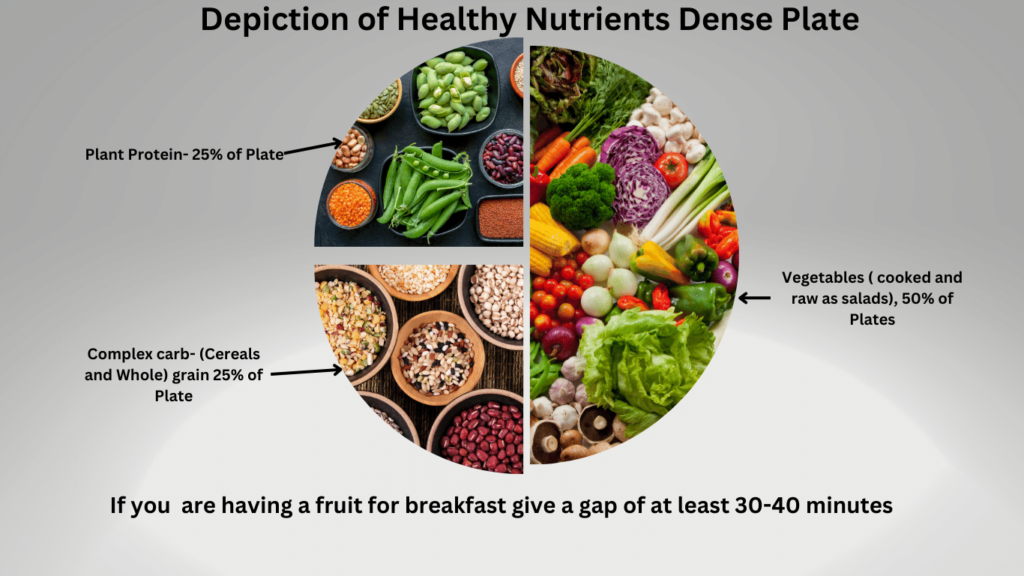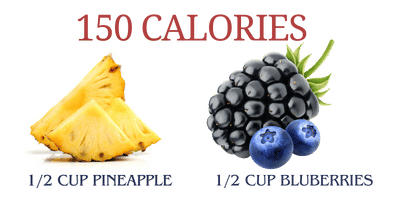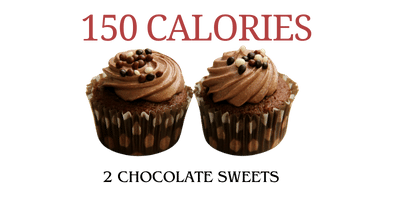6 Components of Gut Reset and Healthy Diet Plate
Our gut health often gets pushed to the back of the queue in today’s busy world. Still, it’s the most important thing for our general health. It might seem hard to deal with this, but don’t worry! We’re breaking it up into pieces that are easy to understand . Come along on this trip with us as we learn about gut reset and how important a healthy diet is.
Table of Contents
The balance between Firmicutes (less friendly bacteria) and Bacteroidetes (friendly bacteria), is mostly responsible for our gut health. An imbalance, with an overgrowth of the less friendly Firmicutes, can lead to an unbalanced gut. and deteriorate our digestive system An unbalanced gut is not just a catalyst for weight gain but also a host of various food sensitivities. It can also affect your mood, energy levels, sleep quality, and overall well-being adversely. Thus, maintaining a balanced gut is crucial.

Overview of the 6 Components of a Gut Reset
Embarking on a gut reset is like tuning a guitar; every string (component) needs to be in perfect harmony. From listening to your gut to syncing with your circadian rhythm, each step is a note in the beautiful melody of health.
Listen to Your Gut
Recognising Signs of an Unhappy Gut
Bloating, gas, and discomfort aren’t just annoying; they’re your body’s way of waving a red flag. Similarly, an unhappy gut might manifest through unexplained fatigue or mood swings. Pay attention; these are the cues your body is sending.
Starting Your Gut Listening Journey
- Food and symptom diary: This is your road map. Tracking what you eat and how you feel afterward can reveal patterns and culprits behind gut distress.
- The importance of consistency: Like any good relationship, the one with your gut relies on consistent care and listening.
Remove the Gut-Disturbing Elements
- Identifying Common Culprits: Sugar, processed foods, and even our beloved coffee can disrupt our gut flora. Recognizing these disruptors is step one.
- Strategies for Elimination: An elimination diet could be your best friend here. Cutting out potential irritants and then gradually reintroducing them, helps identify what doesn’t agree with your gut.
- Reintroduction Phase: This is the detective phase—monitoring your body’s responses as you reintroduce foods. It’s like a dialogue with your gut, finding out what works and what doesn’t.
Make Changes in Your Stress
- Understanding Stress and the Gut: Stress not only affects your head but also affects your gut too. In the long term, stress can damage your digestive system too.
- Stress Reduction Techniques: Meditation and mindfulness can be powerful tools, creating a sense of calm in the eye of a storm. Physical activity is equally potent, helping to release pent-up tension and helping in gut reset programs to a great extent.
Change Habits
- The Power of Habit on Gut Health: Our daily routines sculpt our health. Small habit changes can have profound impacts on our gut health.
- Dietary Habits for a Healthy Gut Reset: Slow, mindful eating, staying hydrated, and balancing our diet can transform our gut health. It’s the little things that make a big difference.
Our internal body clock influences most of the factors of our body, from sleep to digestion. Aligning our habits with this natural rhythm supports a gut reset and overall vitality.
Sleep: The Corner stone of Gut Health
- Fundamentals of Quality Sleep: Quality sleep is like gold dust for our gut. It’s during these quiet hours that our body repairs and rejuvenates.
- Enhancing sleep for gut health: Cultivating a sleep-conducive environment and routine helps signal to our body that it’s time to wind down, supporting both sleep and a gut reset program.
Setting the Stage for a Healthier Diet and Lifestyle

Balancing your plate with a variety of wholesome foods not only supports your gut health but also provides your body with essential nutrients to thrive. By incorporating a rainbow of fruits and vegetables, you can ensure you are getting a wide range of vitamins, minerals, and antioxidants. Whole grains and cereals offer fiber and sustained energy, while plant-based proteins like beans, lentils, nuts, and seeds are excellent sources of protein without the added saturated fats found in animal products.
Remember, small changes in your plate composition can lead to significant improvements in your overall well-being. Experiment with different recipes and ingredients to keep your meals exciting and nutritious. Your gut will thank you for choosing the right food, care, and attention.
Understanding the Difference Between Empty Calorie and Nutrition Rich Foods


There are two types of foods we often encounter in our daily diets: those that are empty calories and those that are full of nutrition. Empty-calorie foods lack essential nutrients that help with functions like growth and immunity, providing only energy. They may lead to inflammation and other health problems and disturb the gut reset journey. Examples of such foods are sugary desserts, candies, and processed snacks.
On the other hand, nutrition-rich foods offer essential nutrients that help with functions like growth and immunity. They consist of macronutrients and micronutrients. Macronutrients include good carbohydrates, proteins, and fats, while micronutrients consist of vitamins and minerals.
Choosing such foods maximizes nutritional value and contributes positively to your overall well-being. For instance, whole grains, fruits, vegetables, nuts, and seeds are nutrient-dense foods that supply both energy and a wealth of nutrients, fostering overall well-being.
Emphasizing on Fruits and Vegetables for Healthy Diet Plate
Fruits and vegetables are a vital part of a nutrition-rich diet. They offer diverse nutrients and are best consumed with minimal processing to preserve their nutrient content. When possible, opt for fresh and locally grown or available food options. Remember, the rainbow colors of fruits and vegetables represent a variety of nutrients that help in gut rest journeys.
Importance of Complex Carbohydrates
Complex carbohydrates are an important part of a balanced diet. They provide sustained energy and are filled with fiber, aiding digestion. Experiment with different preparations like multi-grain flour for rotis or millet-based dosas. Choose whole forms with intact bran whenever possible.
Plant-Based Protein
Plant-based proteins are a healthier alternative to animal-based protein sources. Soak beans and unprocessed legumes to reduce anti-nutrients (like phytates and saponins) and enhance digestibility. Avoid overcooking and excessive fat use when preparing these proteins.
Choosing Nutrient-Dense Foods over Calorie-Dense Foods
Even foods with the same calorie content can differ in their nutritional value. For instance, a portion of black seedless grapes may have the same calorie content as a sugary dessert, but the grapes will provide much higher nutrition. So, making a conscious choice of nutrient-dense foods over calorie-dense foods can significantly improve your health and well-being.
Hydration (Water Intake)
Staying hydrated is as important as having a balanced diet for maintaining gut health and cleanliness. Drinking ample water, along with dietary choices, improves digestion, prevents constipation, and maintains gut lining health. It also aids in blood circulation, nutrient absorption, and toxin elimination, which are essential for a healthy gut. While plain water is beneficial, opting for infused water, coconut water, or homemade juices with vegetables and fruits can also support gut health. However, it’s crucial to avoid sugary and processed beverages, as they can harm your gut health, contribute to chronic conditions, and hinder a gut reset program.
Supplementing Your Gut Health
Supplement your recommended fiber intake with Nutrilite fibre. Consume it 30 minutes before your breakfast and dinner. Also, consider taking Nutrilite prebiotic & probiotic capsules. For adults, consuming one capsule daily can contribute to a balanced gut microbiome.
Conclusion
Incorporating wholesome foods is crucial, but it’s equally important to steer clear of harmful dietary practices. Items like sugary beverages, alcoholic drinks, processed foods, excessive carbohydrates, animal products, junk foods, tea, coffee, and processed snacks can all throw off your gut balance. Smoking is also harmful to gut health.
Keep in mind that a well-balanced gut is essential for your overall well-being. Listen to your gut today and initiate the steps needed for a healthier gut microbiome. Remember, every journey starts with the first
FAQ
Empty calorie foods are those that provide calories (energy) but lack significant nutritional value in terms of vitamins, minerals, fiber, or other essential nutrients. Examples include sugary snacks, processed foods, and beverages high in added sugars or unhealthy fats. Consuming too many empty calorie foods can contribute to weight gain and nutritional deficiencies.
When people talk about a “gut reset,” they are typically referring to giving your digestive system a break or making changes to your diet and lifestyle to help reset it. You may need to temporarily eliminate certain foods, incorporate more fiber-rich foods into your diet, increase your water intake, reduce stress levels, and consider adding probiotics to support the health of your gut bacteria. It supports the health of the digestive system, provides relief from common issues such as gas or pain, and restores balance to the gut.
The use of ginger, turmeric, jeera, and fennel seeds can add a touch of flavor to your food. They improve digestion and relax your digestive tract!
While some people feel better in a few days, lasting changes can take weeks to months. It’s a marathon, not a sprint.


1 thought on “6 Components of Gut Reset and Healthy Diet Plate”
Pingback: Enhancing intestinal motility: The role of yoga and exercise in digestive health - Fitness Lifestyle